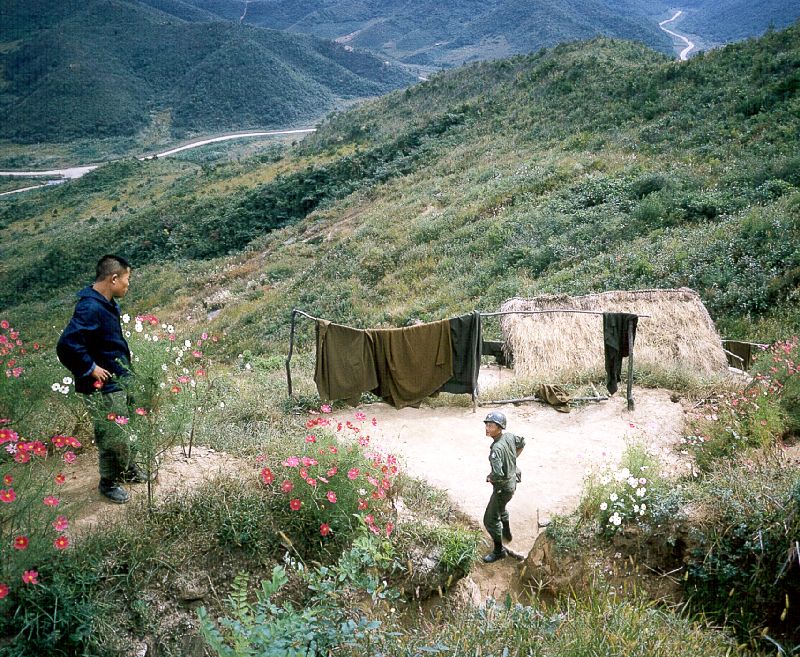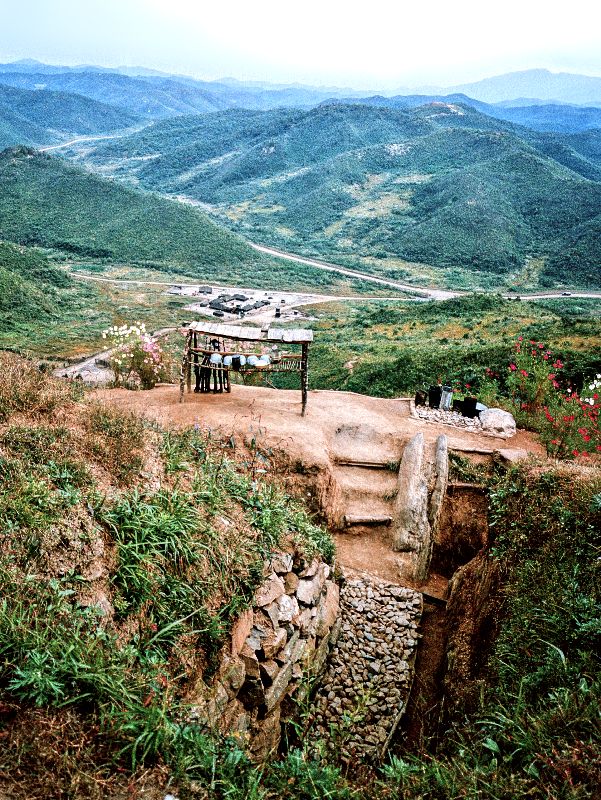DMZ초소사진-1964 이시우 2008/02/11 718


http://www.ti-journal.com/ti-journal-0350.htm
The Korean demilitarized zone (DMZ) has been described as “the most dangerous place on earth.” Although few have died here, it represents a standoff that begins where the Korean war ended, with two massive armies staring each other down across a strip of land, about one and a half miles wide, that cuts the Korean peninsula in two.
This is what it looked like in 1964.
I am standing at the top of a hill, right on the DMZ. I’m facing south, towards Seoul. Directly behind me is North Korea.
At the bottom of the picture, running beneath my feet, is the entrance to a forward observation artillery post. It’s like a protected cave, giving some shelter from enemy fire, while allowing a view to the north for calling in our artillery fire. This post was manned by the South Korean army. The little rack in the center of the picture holds some utensils and their rifles.
Past that, at the foot of the hill, is the American army base camp. Just a ring of tents. I shared a small two-man tent with another army medic. At night, we sent radar patrols out into the DMZ. They tried to spot North Korean infiltrators.
I spent a month here in the winter of 1964.
Note: Most photos of the DMZ that show up in the press are from the “Truce Village” at Panmunjom, where guards from both sides parade around in spiffy uniforms and watch each other from guard towers. This image shows what the more rugged, unknown areas of the DMZ looked like.
아래사진
http://www.ti-journal.com/ti-journal-0053.htm
I served in the US Army from 1963-1965, a draftee. The second year of this was spent in an armored scouting unit stationed by the DMZ in Korea. This is an isolated area in mountainous country. In 1964, Korea was still recovering from the war which had ended 11 years earlier. This area with filled with small villages. As you got closer to the DMZ, much of the area was closed to civilians.
This photo was taken near the top of a hill that bordered right on the DMZ. We are looking south, towards Seoul. These two soldiers are in the South Korean Army. They maintained a small forward observation post near the crest of the hill. Our unit maintained a base camp at the foot of the hill, where we sent out radar patrols across the DMZ at night, looking for infiltrators from the north. I spent a month in this base camp in 1964.
In the 1970s, Camp Kaiser, where our cavalry unit was stationed, was turned over to the Korean Army. In the last few years, most of the US soldiers have been withdrawn from the DMZ. A large portion of the soldiers stationed in Korea have quietly been removed and sent to make up shortfalls in Iraq and Afghanistan.